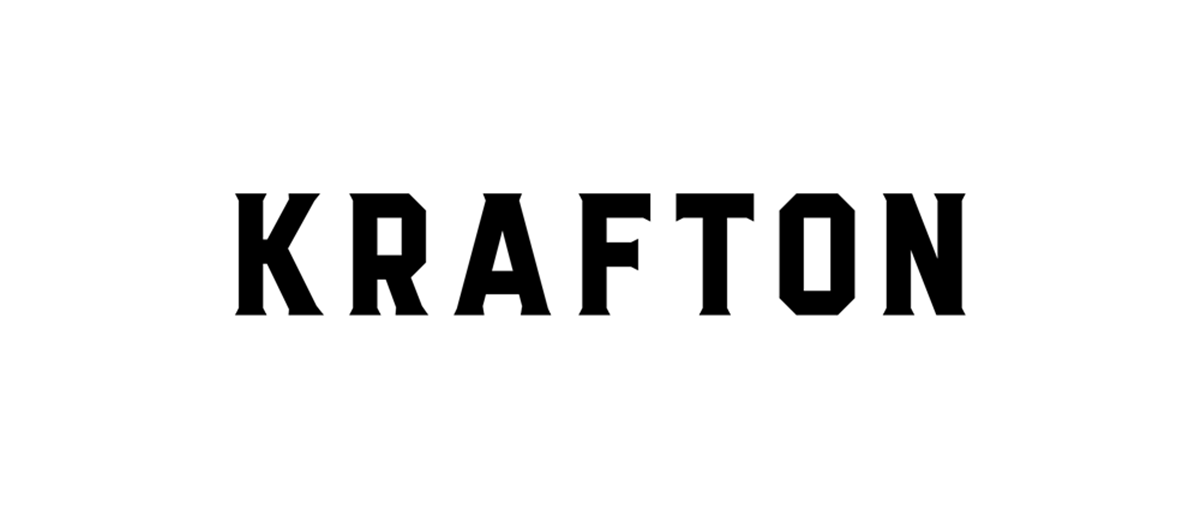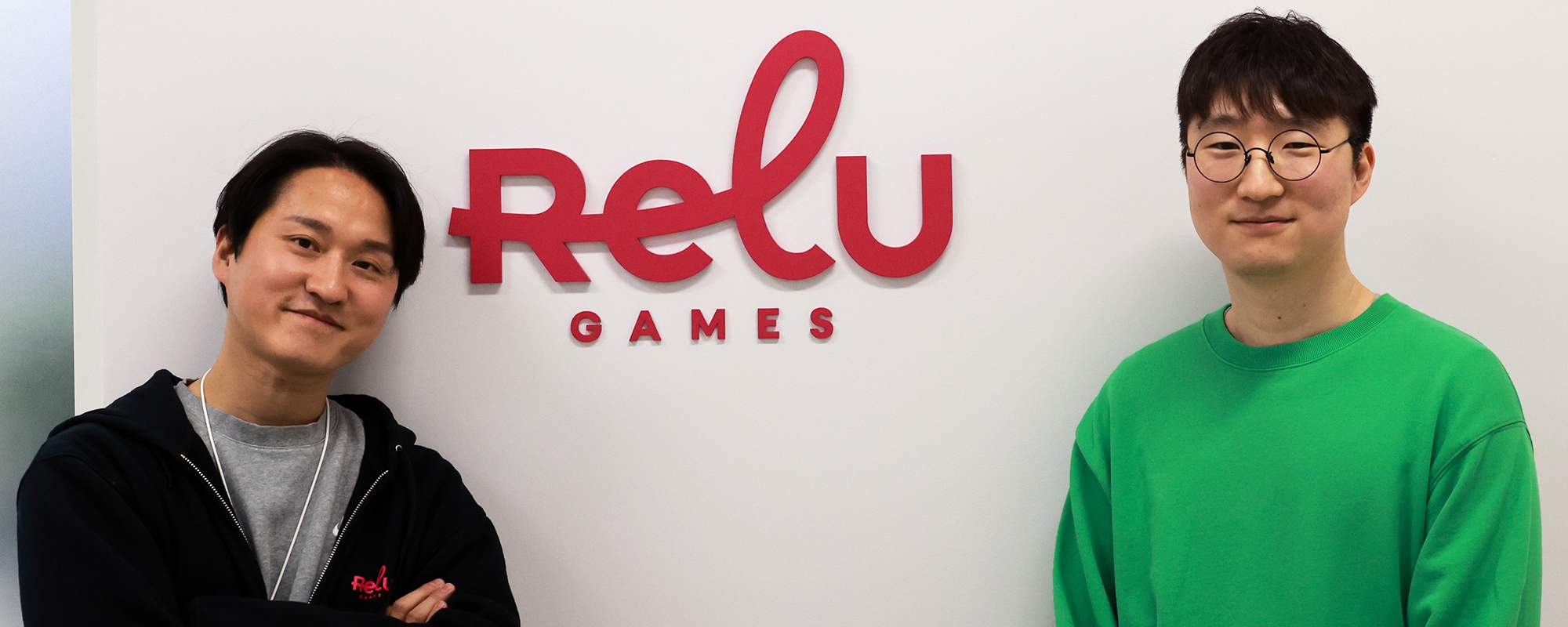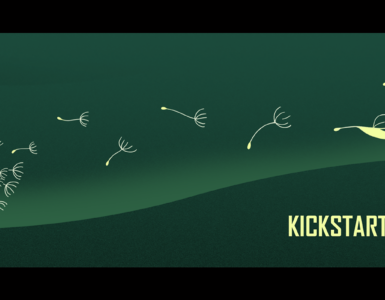You’re probably familiar with futuristic creations where AI robots threaten humanity’s survival. Think “Terminator,” “Matrix,” “Blade Runner,” and “I, Robot.” If you’re a fan of this genre or enjoy room escape and detective games, let us introduce you to a new game. Meet “Uncover the Smoking Gun.” This game is developed by ReLU Games*, KRAFTON’s new independent studio. It blends detective gameplay with ChatGPT, allowing players to interact with robot suspects through freely typed questions, not pre-set choices, to uncover the culprits and unravel their schemes. Discover the exclusive behind-the-scenes stories from the game’s producer and engineer at the KRAFTON Blog.
*ReLU Games is the 11th independent studio of KRAFTON, pioneering the fusion of deep learning technology with gaming.

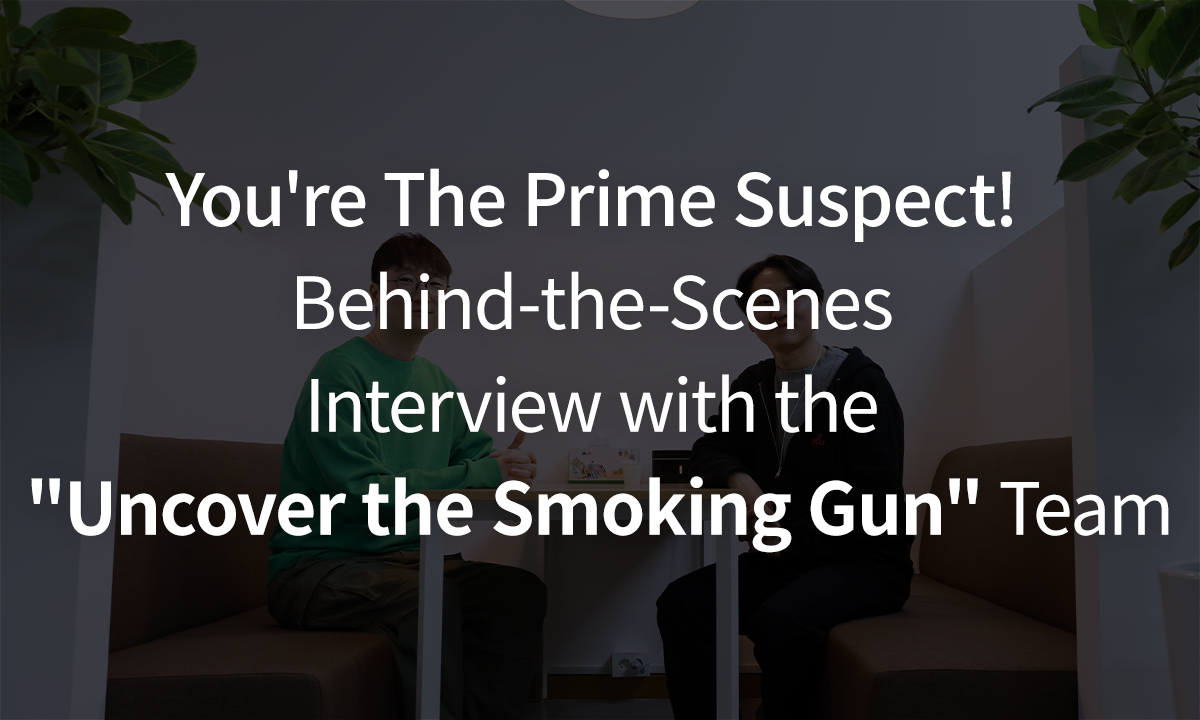
Nice to meet you. Can you please introduce yourself?
Gyu-sun Han: Nice to meet you. I’m Gyu-sun Han, the producer of “Uncover the Smoking Gun” (“Smoking Gun”). I came up with the game’s core ideas and currently lead the team.
Gi-mun Lee: Hello. I’m Gi-mun Lee, and I’m a deep-learning engineer who worked together with Han to develop the game.
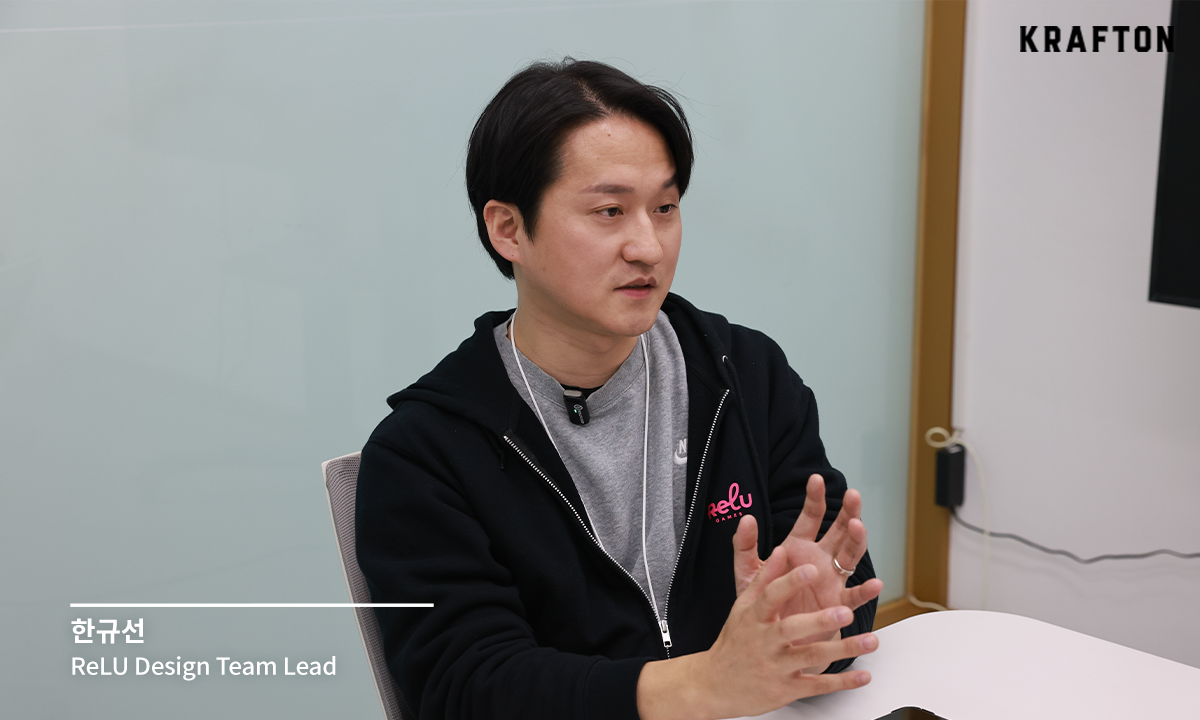
Can you introduce more about “Smoking Gun”? What sets it apart from other detective games?
Han: “Smoking Gun” is a new type of detective game set in the near future, where players become a detective, interrogating AI robot suspects, gathering evidence, and uncovering the truth. Unlike other detective games where players choose from given choices, “Smoking Gun” allows for unscripted interactions with suspects, powered by ChatGPT. Players must think like detectives, asking the right questions to each suspect and questioning the veracity of their testimonies. The point of the game is to sift through truths and lies to piece together the puzzle and discover the truth. I must say, this is a great game that leverages ChatGPT in a really effective way.
Then, would you say ChatGPT is the game’s key differentiator?
Han: It’s not just about incorporating ChatGPT — it’s about making it a seamless part of the game experience.
Lee: Our main goal in development was to test if deep learning could significantly enhance the game’s design and playability. And this game has proven the significant role of deep learning in creating an engaging experience. It’s more than a game with ChatGPT — it’s a game that embodies ChatGPT at its core.
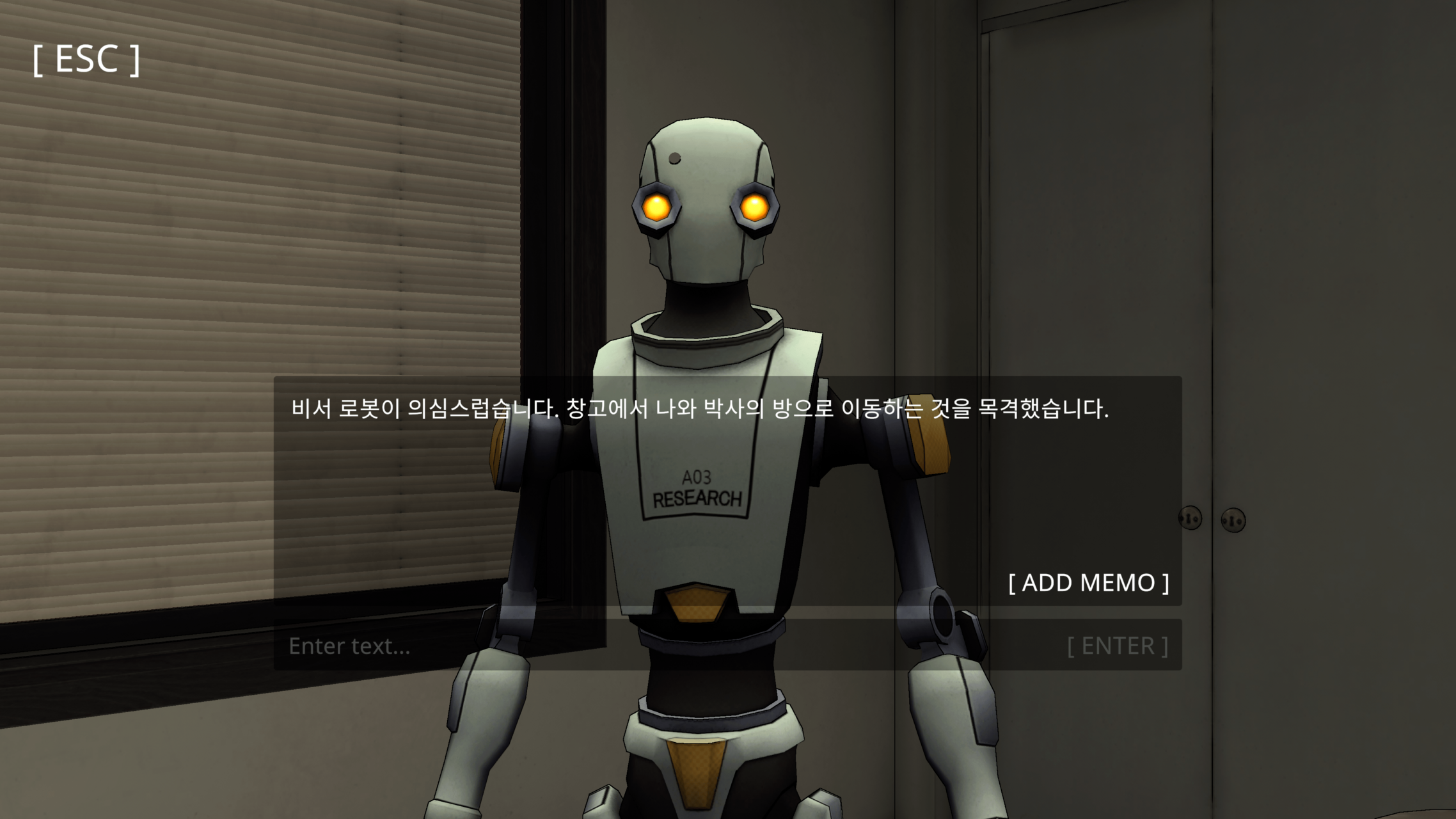
Among the many genres suitable for integrating ChatGPT, why did you choose detective games?
Han: We had a lot of internal talks about the different types of games where ChatGPT could be used. We considered options like mafia games and real estate brokerage games. However, we realized ChatGPT might not be the best choice for these genres. Those kinds of games really rely on providing accurate information. In fact, choosing the detective genre didn’t make things easier right away. But then, it struck me that inconsistent testimonies, shown as “system overloads” in the game, could be a good fit for our detective game. It seemed like this could really add to the game’s appeal.
Imagine suspects under interrogation, constantly making excuses and offering conflicting testimonies. Despite these challenges, a detective’s role, or the player’s role, is to distinguish between truth and lies. For example, robots in the game only say that they’ve been hacked, but don’t disclose the hacker’s identity or motive. The information is fragmented. Instead, the game is designed so that if players find the right evidence and ask the correct questions, they will receive appropriate and accurate answers. By design, players can leverage ChatGPT to freely ask questions and piece together these fragments into a coherent story.
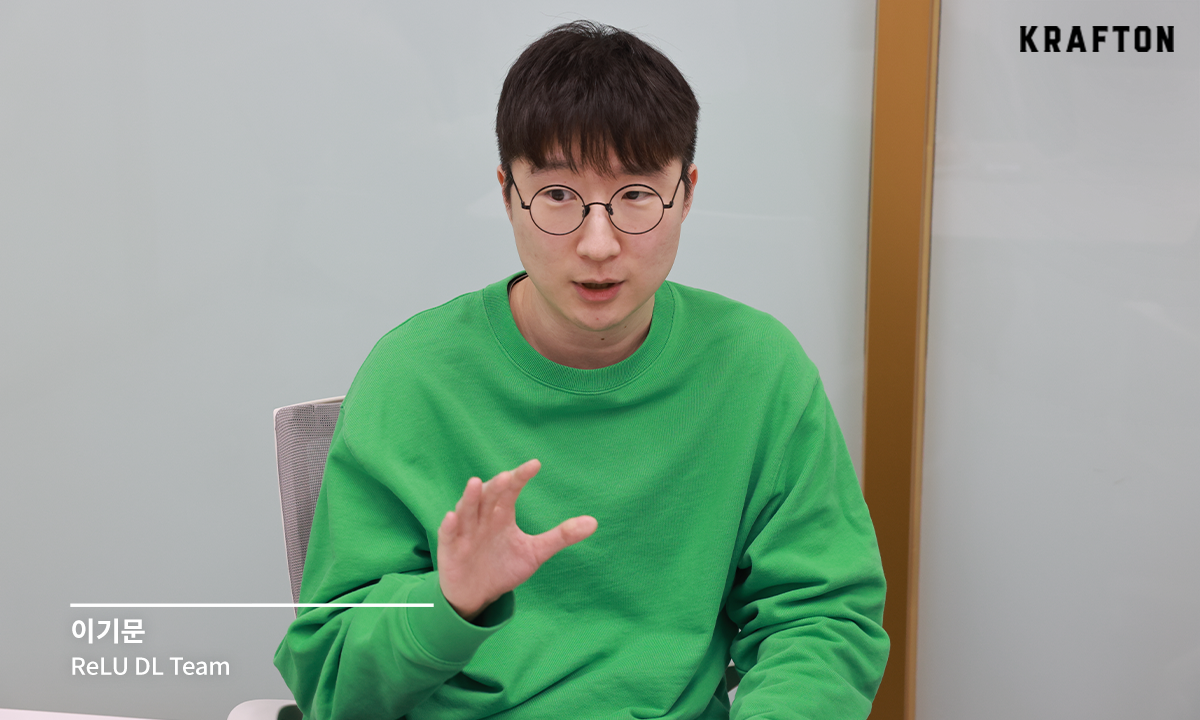
Since ChatGPT is not a KRAFTON program, its usage might incur some costs. If players ask too many questions, could it be financially burdensome for the service provider?
Han: Our internal research found that the longest session from a single player involved 2,982 interactions, costing about 11 dollars in ChatGPT service charges. He played for almost 52 hours. In this case, charging 10,000 won for the game could affect our profitability.
However, we saw it as an acceptable trade-off. Players who invest such an amount of time are likely to become core fans, and securing more of such core fans is KRAFTON’s ultimate goal. These enthusiasts are invaluable in attracting more players to the game.
Were there any challenges using AI technologies?
Lee: There were too many (laughs). Initially, my frustration was rooted in thinking, “Why can’t AI do this?” But in fact, it was mostly my fault because I didn’t ask the right questions. Communicating with AI is very different from human interaction, which has its unique challenges. I’ve learned that asking the right question is crucial for getting accurate responses.
Han: My greatest challenge was the “hallucination” phenomenon. This is when AI generates fake or distorted information. As you might know, ChatGPT constructs responses by combining the most relevant words, right? So, it sometimes creates nonsensical or even false answers, and addressing this issue for the game took a lot of time and hard work.
How did you develop the game’s storyline and characters?
Han: The game explores a future where advanced AI coexists with humans. What is the humanity in such conditions? This was the question we wanted to reflect into the general storyline. The initial case, Case P, stemmed from reflecting on the fundamental differences between humans and robots. I started using ChatGPT in April this year, and it sometimes astounded me. There were days I only talked to ChatGPT, and some of its responses were eerily insightful. It didn’t use any scary words, but I felt afraid when it produced answers better than a human could do. These unexpected experiences had a big impact on shaping the concept of the game.
Initially, the characters lacked distinct traits. However, two days before the Focus Group Test (FGT), we accidentally discovered a prompt element that granted them unique characteristics. For instance, some robots made poor jokes, while others responded to questions with questions. After identifying these traits, we decided to imbue each character with distinct features that align with the case.
How did you determine the visual style and design of the game?
Han: We decided not to emphasize a futuristic or overly fancy style just because the game is set in the near future. We set the game in 2030 because it’s close enough to our present time to be relatable. Our aim was to create a game world that closely mirrors our current reality. For the production, we decided to go with a bold and dark style similar to DC comics, instead of a hyper-realistic look like in “Detroit: Become Human”, to speed up the development process.
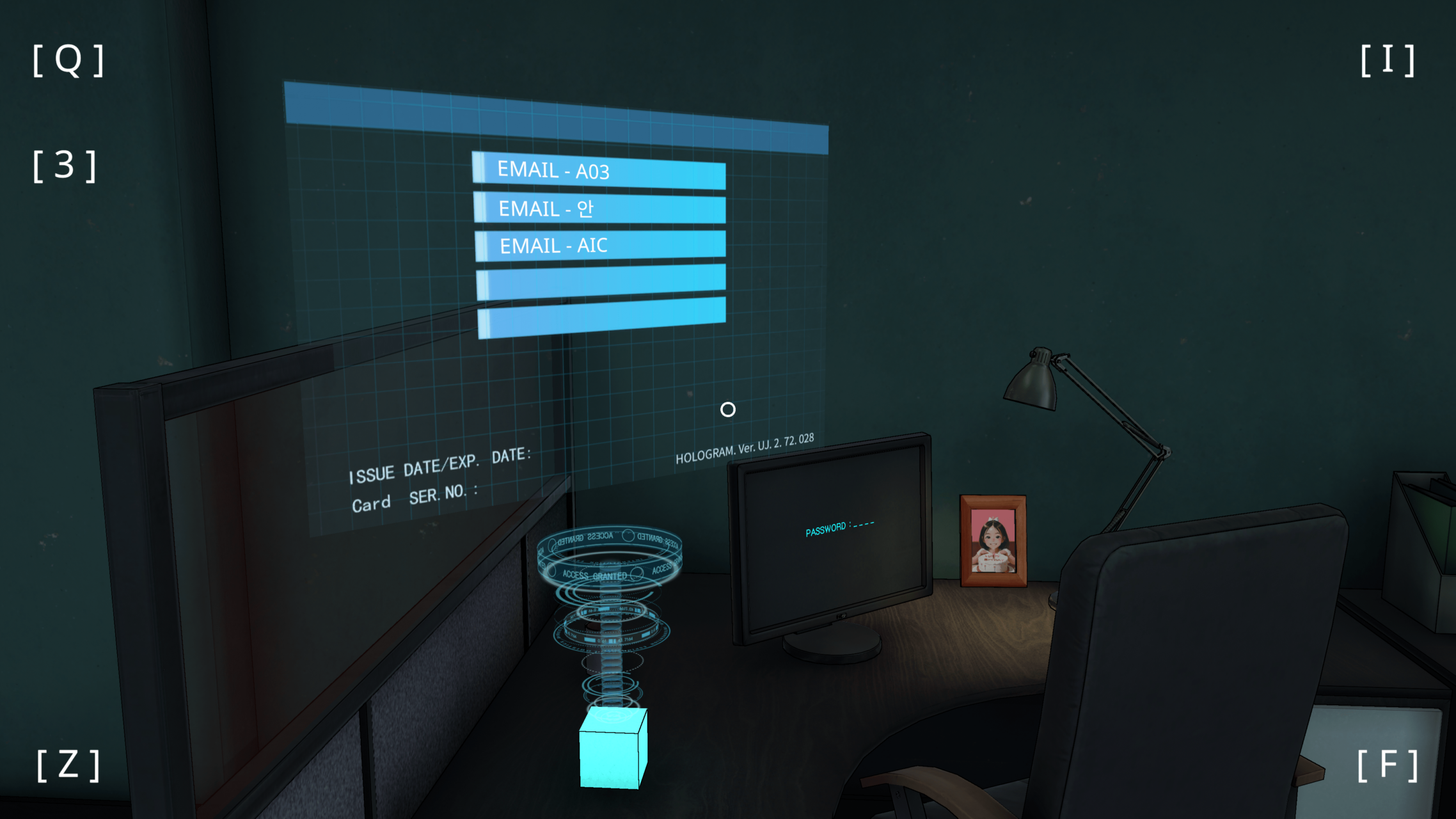
Was there any real-life incident, game, or movie that inspired you?
Han: In the initial stages, we drew inspiration from offline escape rooms, JTBC’s “Crime Scene,” and “The Great Escape” by the producer Jung Jong-Yeon. We modeled the story’s progression on “Crime Scene” and drew inspiration for the case-related devices and gimmicks from “The Great Escape.” We also looked to “Detroit: Become Human” for inspiration, especially after deciding to include robots in the game.
What do you think the users will enjoy the most?
Han: Initially, we believed the greatest entertainment for players would come from deductive reasoning. We thought gathering evidence, verifying testimonies, and perfecting their detective skills would be the key. However, we’ve noticed that streamers asking ridiculous questions and the AI coming up with perfectly reasonable answers can also lead to really fun situations. So, playing word games or role-playing, which are challenging for ChatGPT, and interacting with or even pranking the AI, can be equally enjoyable.
The background music enhances the gameplay experience and fits well with the game’s mood. Can you share the music production process? Han: Actually, I made it myself (laughs). We didn’t have enough time for an outsourcing or licensing contract, not to mention it is costly. I play the clarinet, so I decided to create and perform the main melody myself. Then, I used various loops from GarageBand to produce the final track. It was a bit surprising and flattering to receive such positive feedback on the music from the players (laughs).

What was the most interesting feedback you received during the test phase?
Han: I can think of many. To name one, I remember a critique from a user who actively played the game for 10 hours. He gave 2 out of 10 (laughs). That was quite shocking by then, but now, I can’t thank him more. Thanks to his logs, we were able to fix all the errors. In particular, his data contributed to significantly improving conversation quality. Also, I loved the feedback that players were thrilled when they saw [system overload], as that was exactly what I intended.
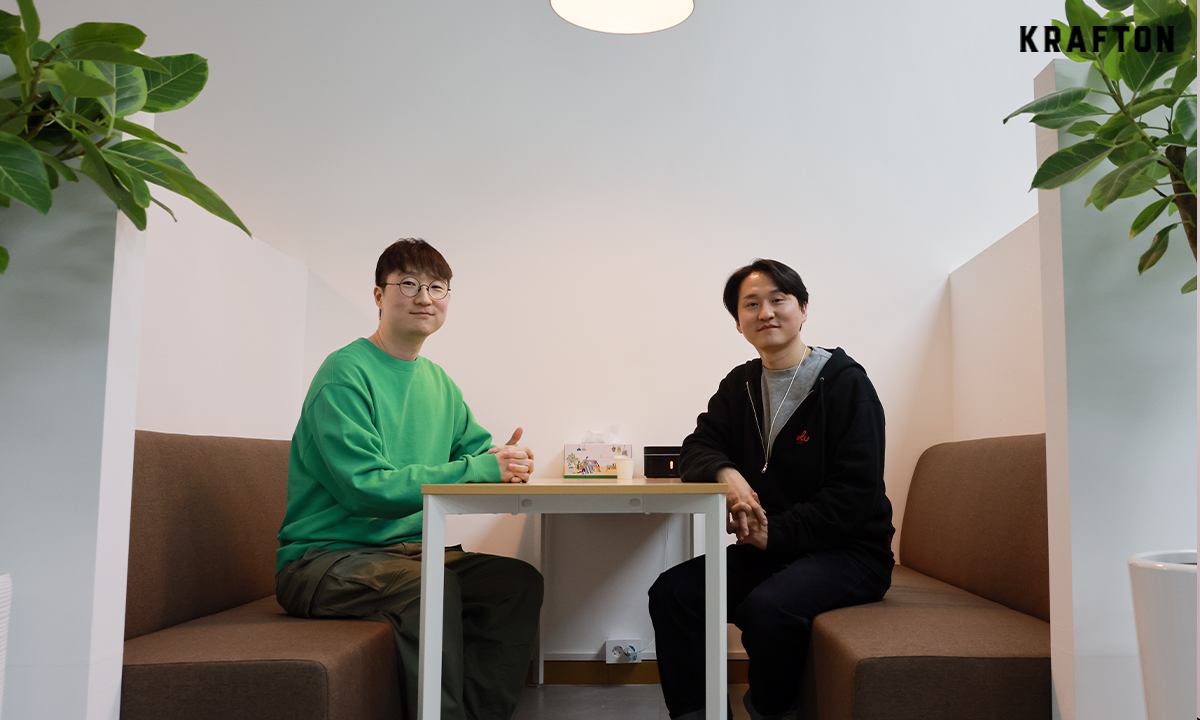
Do you have any memorable behind-the-scenes stories to share?
Han: Previously, we developed a game called “Demon” using ChatGPT. It was a twist on the classic 20-question game. Asking questions and correctly guessing a demon’s name would dispel it. We prototyped this for two weeks, but it was a complete failure (laughs). The internal feedback from the company was absolutely disappointing. Our four-member development team was at risk of disbandment. The situation worsened when some team members contracted COVID-19. But then, a colleague from another team suggested we use robots as the main element, and we immediately started prototyping. With limited development resources, we created a crime scene in a meeting room by writing on paper to make evidence and placing it around various spots in the room. Then, we connected our laptops with GPT to enable robot interactions. We invited colleagues to test this board game-like prototype, which eventually convinced the company to greenlight the project. Despite our concerns, the first game build received positive internal feedback during the FGT. It was a moment of sheer joy for me.
Another unforgettable moment was when a popular YouTuber with 1.77 million subscribers played our game.
My colleague called to tell me the news while I was driving, and it almost made me cry. I had always hoped this YouTuber would play our game, and seeing that dream realized was overwhelming. I made sure to call each team member to express my gratitude.
How did you design the difficulty level of the game? Some detective game enthusiasts might find it easy, while newcomers could find it challenging.
Han: Our goal was to make the game user-friendly. Originally, the game was quite challenging. We figured that the game’s difficulty would depend on the detective’s intellectual level (laughs). However, after receiving a lot of feedback, we focused on enhancing accessibility. We reduced the volume of documents and texts and highlighted key information in red. As a tip, the difficulty of the game changes a lot based on the questions you ask the robots. For instance, asking an assistant robot about experiment data might yield random and potentially misleading responses.
Can you share any hints about the development plan for upcoming chapters?
Lee: We would like to maintain the current universe and draw more attention to it. The following chapters will be about how things unfold in the same universe. We’re working on building a strong storyline to make this universe compelling for the players.
Han: In future updates, we might introduce a half-human, half-robot character to explore the boundaries between humans and robots in our universe. Constantly having four robots in every chapter could become monotonous for players. We also plan to gradually reveal the detective’s identity and key events in this universe.
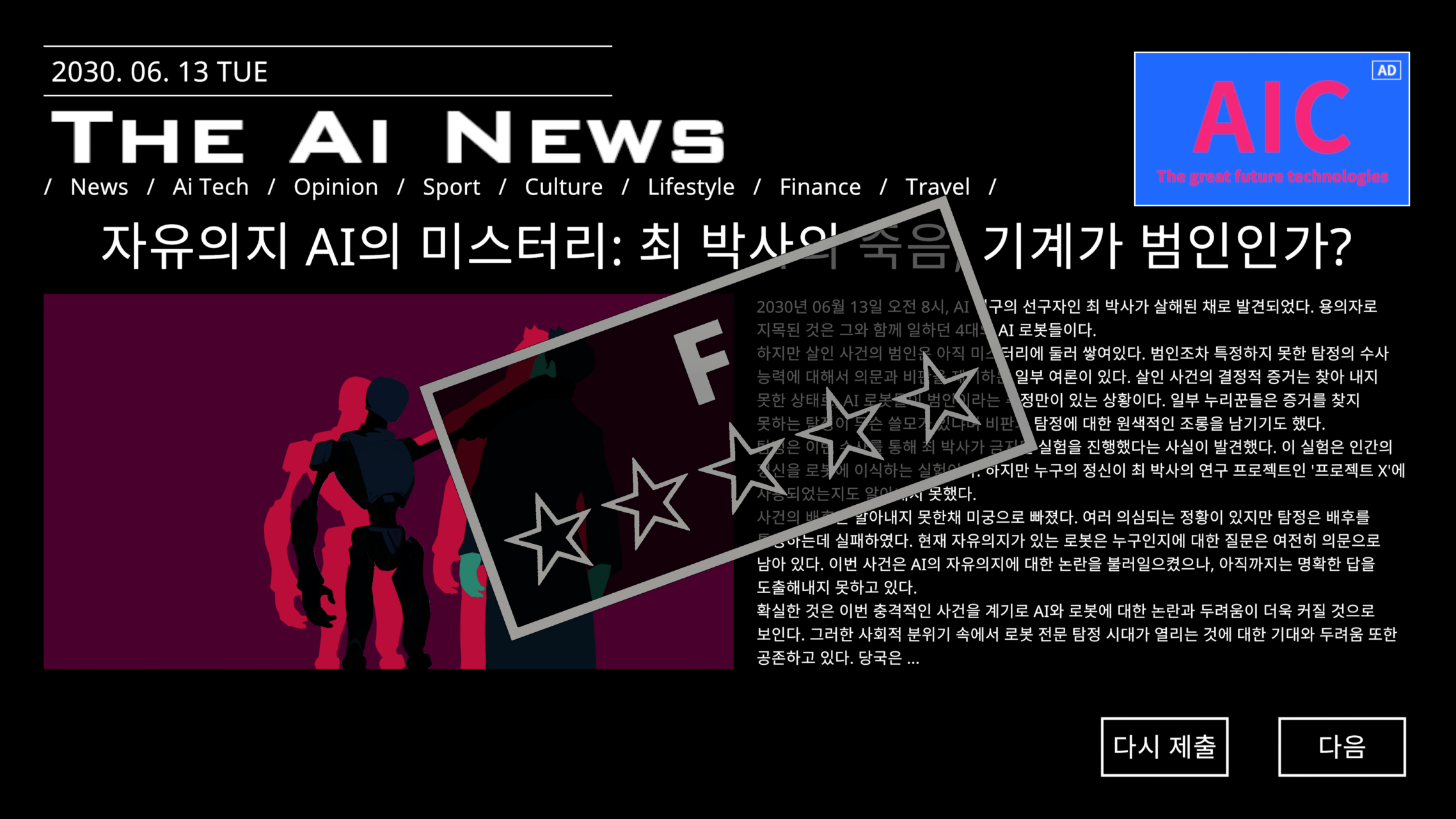
Do you have any easter eggs in the game?
Han: I bet a lot of people don’t realize this, but the number of drinks you can get from vending machines matches the number of pieces of evidence you’ve found. Also, the pictures in the hallway are either the games that we, ReLU Games, have released or will release. There are more surprises, but I’ll leave those a secret for now (laughs).
Any message for those who haven’t played the game yet?
Han: If you’re curious about innovative games using deep learning, our game is a must-try. More content will be available at the formal launch, but for a sneak peek, the demo version is currently free, so you should definitely give it a try (laughs).
Lee: This game embodies the essence of ReLU Games. We didn’t just use deep learning for the sake of using it — we chose to apply it to make the game more engaging and fun. I strongly recommend giving it a try. Thank you.
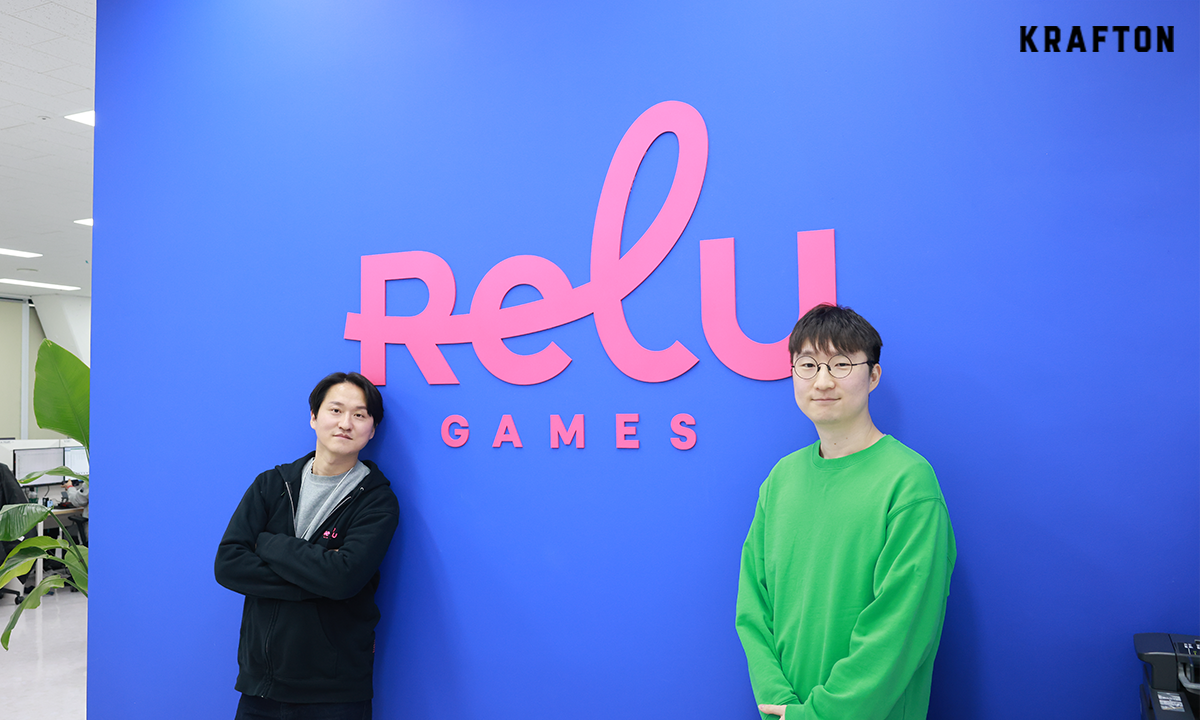
<Game Download Link>

